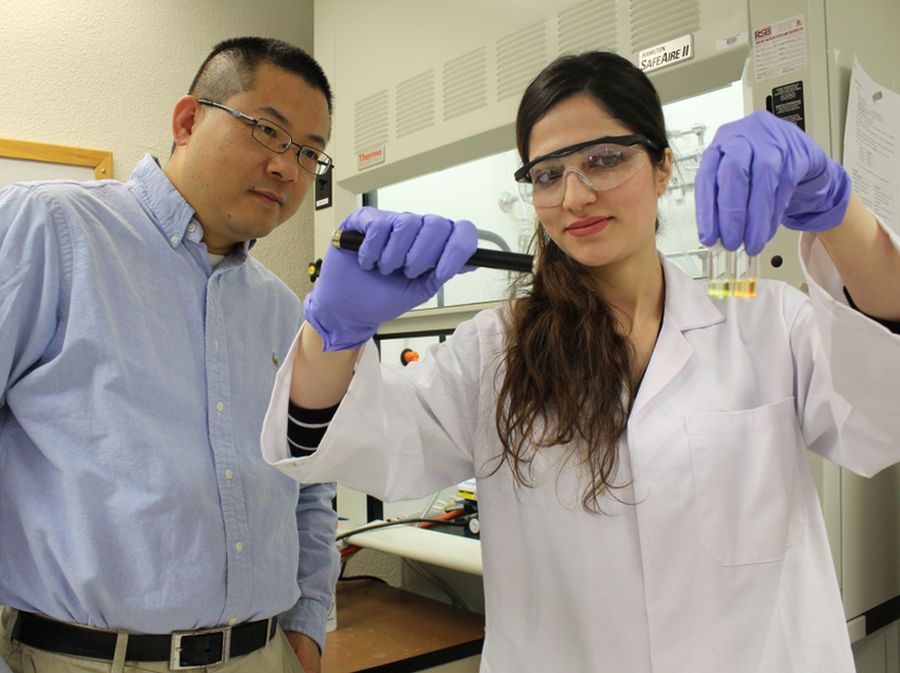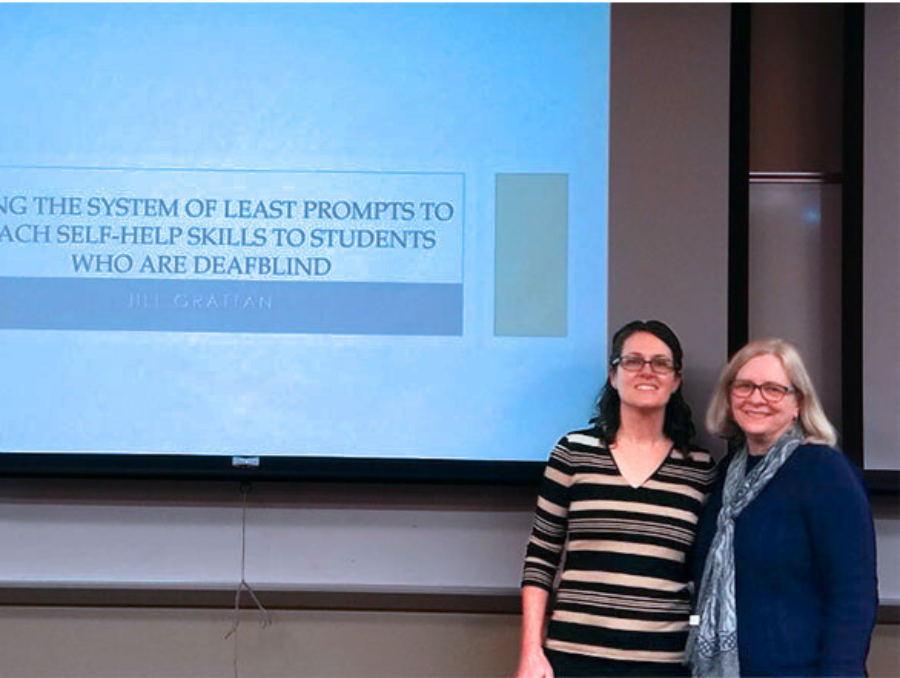An effort that began with patenting the use of zinc nanoparticles in bioassay and clinical diagnosis processes has led to the latest example of commercialization at the University of Nevada, Reno.
The patented (US 9,482,616 B2), dual-signal amplification technology developed by Xiaoshan Zhu, associate professor in the Department of Electrical and Biomedical Engineering, and his team in the College of Engineering has been licensed to Cachet BioSciences, LLC, a Minnesota-based company that sources specialty chemicals for use in research and development settings or production applications.
“This technology has significant promise to improve detection sensitivity of clinical laboratory tests for diseases in human patients,” Claire Hovland, Cachet BioSciences president, said.
“Cachet BioSciences is combining its expertise in biochemistry and in-vitro diagnostics to further develop the technology,” Hovland said. “Upon demonstration of the effectiveness of this technology for in-vitro diagnostics, we will work to establish commercial viability and grow the business.”
Zhu worked through the patent application process with the University's Enterprise & Innovation office which provides technical expertise to protect and enable commercialization of innovations produced through the research activities of faculty, staff and students. In many instances, including this one, the patented discovery moves forward to be commercialized.
“Bringing discoveries into the marketplace is the way that university research benefits society,” Ellen Purpus, assistant vice president for enterprise and innovation, said.
“We want our work to be useful,” said Zhu, who now holds two patents. “It is important to think about the impact of our work in the market. It encourages our students to do critical thinking about the application of research.”
The commercialization and intellectual-property protection processes begin with University researchers disclosing their innovation through an online, secured form at unr.inteum.com/inventorportal.
From there, the Enterprise & Innovation team assesses the technology to determine the novelty and commercial potential of the innovation. Next, the appropriate type of intellectual-property protection is determined, and this may include filing for a patent, copyright or trademark.
“The patent application process was very challenging. I had to explain why my work was new, why it is unique,” said Zhu. “It was challenging but worth pursuing.”
Shannon Sheehan, manager for technology commercialization, explains that the University owns and administers research findings produced by faculty and staff within the scope of their employment. When the research results in a patent or other intellectual property, the rights to use the technology may be licensed to use the technology to a company or to a faculty-created “spinout” company. The researcher or faculty member is closely involved along the entire process.
To prepare for marketing, Sheehan works with the researcher to develop a one-page summary of the discovery or technology without revealing proprietary information. Sheehan then partners with the researcher to develop a list of companies that might have interest in the research or can provide insights to better understand the marketplace for the product.
Once a discovery is licensed, the company or spinout continues product development and assesses the market viability, as is the case with Cachet BioSciences.
For more information about intellectual property, licensing and commercialization at the University, visit unr.edu/enterprise#ip
















